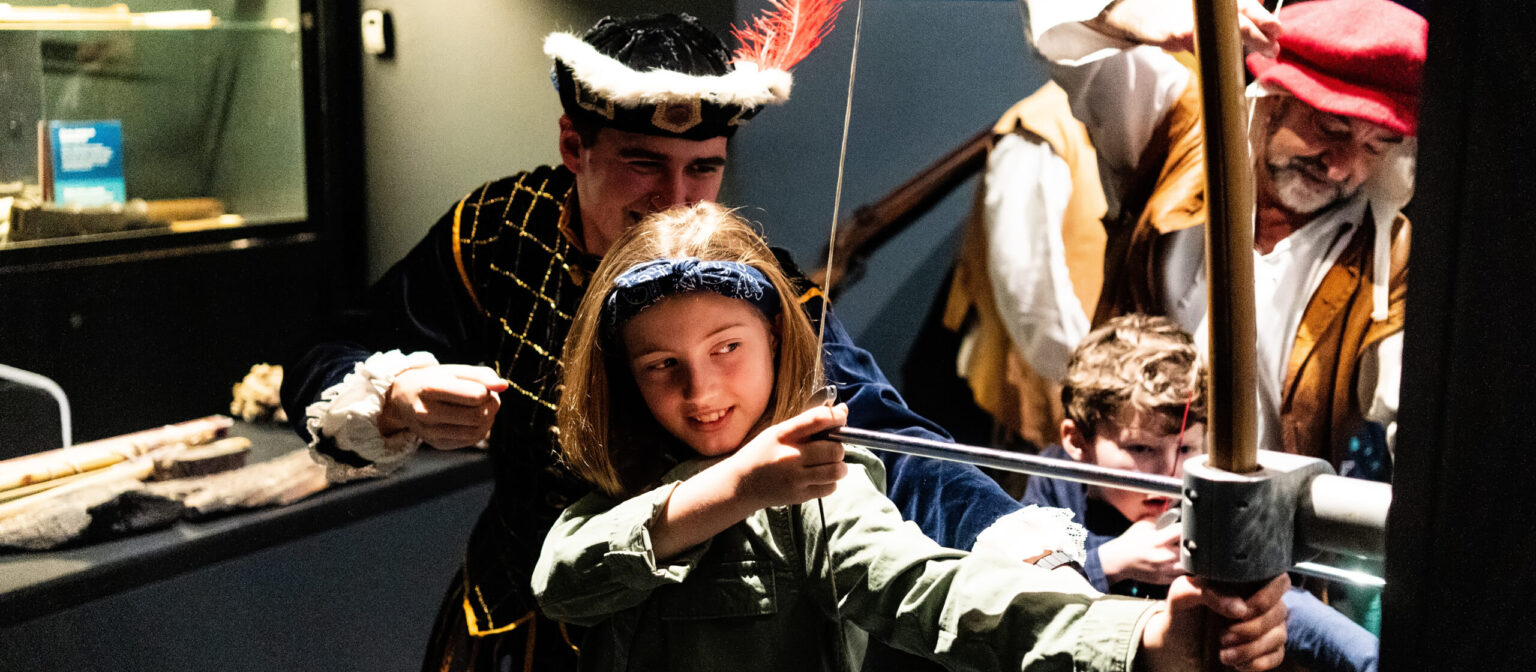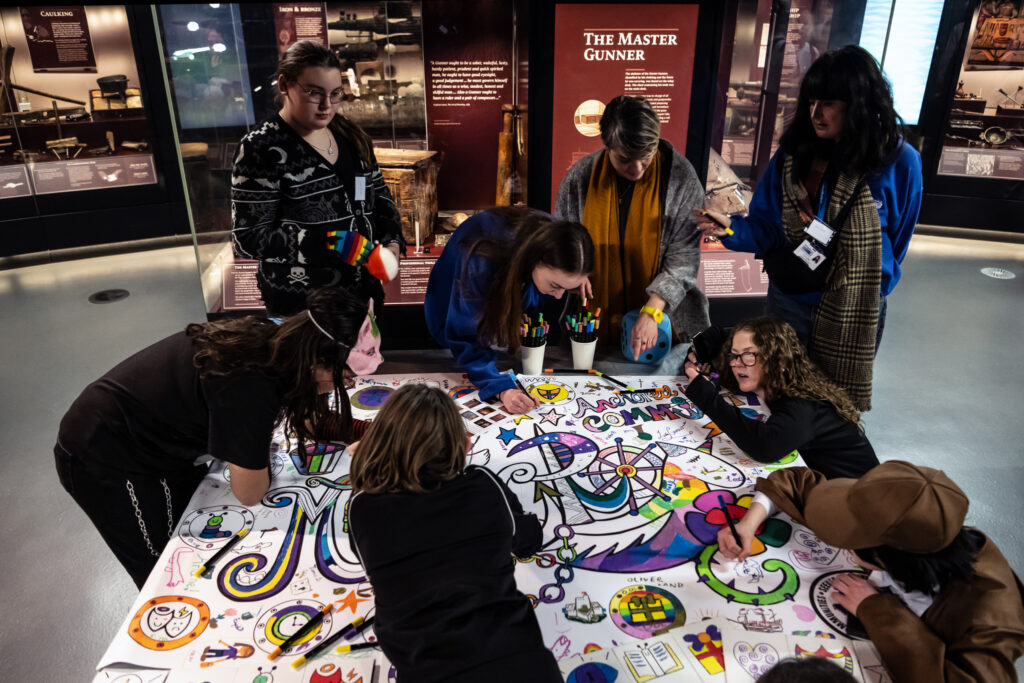Eleanor Mills, Mary Rose Museum publishes insights into impact of community engagement, Museums Association,

The museum’s capability to enhance the wellbeing of the people whose lives it touches has also been measured in “Wellbeing-adjusted Life Years”, or Wellbys. The ship’s contribution, the report says, is 374 Wellbys, which amount to a value of £5.8m.
Biggar Economics assessed the Mary Rose thoroughly across its quantitative economic impact (covering operational impact, staff spending, supply chain spending and visitor impacts); economic impacts (GVA and number of jobs created, inclusive of indirect and induced impacts); and the social impact (quantified in Wellbys, as recommended by HM Treasury, when one Wellby was valued at £15,400 in 2023).
The report states that in 2023-2024, the total direct impact of the Mary Rose in Portsmouth and the Solent region was £1.9m direct GVA and 49 direct jobs, which takes in all activities undertaken by the Mary Rose Trust, its trading arm and catering and hospitality services.
The report details Wellbys and associated value in sterling across staff wellbeing (23 Wellbys or £300,000); volunteering (14 Wellbys or £200,000); visitor wellbeing (290 Wellbys or £4.5m); social inclusion (47 Wellbys or or £700,000).
The Mary Rose Trust and the museum it takes care of is dedicated to conserving the Tudor warship and its treasure and engaging audiences worldwide through education, outreach, and sustainable management. Attracting thousands of visitors annually, it continues to play a key role in the success of Portsmouth Historic Dockyard, which hosted 870,000 visits in 2023.
Community engagement
The trust’s community engagement programme was established during the 40th anniversary celebrations in 2022. The aim was to re-engage the local community with the Mary Rose and encourage a sense of ownership of the museum and the ship.
Dominic Jones, CEO of the Mary Rose Trust, said: “The Mary Rose is Portsmouth. She was built in Portsmouth, crewed by people from Portsmouth, sank in Portsmouth, lost and found twice in Portsmouth and raised in Portsmouth.
“Yet we lost our identity in Portsmouth, and it didn’t feel like the museum was part of the community. So, we used the 40th anniversary as a great opportunity to give back and really engage with our community. This led to the 18-month long project called Anchored in the Community.”
The project comprised six key parts:
- Portsmouth Music Hub engaged schoolchildren in composing and singing songs about the Mary Rose. A new piece of music was written as part of this project, The Mary Rose Brawl, and was performed by pupils from St John’s Cathedral Catholic Primary School.
- Seekers Create used doodles and art to explore ideas about community in Portsmouth. They created a Mary Rose-themed doodle and undertook workshops with young people and adults with disabilities in the city.
- My Dog Sighs, an internationally-renowned street artist from Portsmouth, worked alongside young people from a local organisation, Motiv8, to create a new piece of artwork for the Mary Rose.
- Aspex Gallery worked with participants in their “Generate” group, which engages with people who suffer with dementia, and created art based on the Mary Rose collection.
- Visually-impaired artist, Clarke Reynolds, alias Mr Dot, worked with visually-impaired children and adults, Mary Rose staff and volunteers to create a Braille wordsearch. One hundred small tiles were created, each representing a Braille letter.
- Funk Format, a local dance historian and street dance group, created a new dance, the Mary Rose Brawl. Informed by historical evidence and inspired by modern interpretations, the dance incorporates information about the crew of the Mary Rose.

All these aspects were celebrated in a week of activities during February’s half term where visitors to the Mary Rose could participate in all elements of the Anchored in the Community project.
Jones said: “The report gives confidence that the Mary Rose contributes in the wider community, removing barriers to visiting the museum and to re-ignite local interest in the ship and the collection.
“It confirms that we are able to engage with new and diverse audiences. As an independent museum the findings from the report will continue to influence our thinking around audience engagement and how we can inspire people to interact with the Mary Rose story.”
Published in early 2025, the socio-economic impact report has not yet fed into the museum’s five-year business plan, which was released the previous autumn, but a spokesperson said that the report will definitely inform future versions of the business plan.
The research comes after a difficult period during which the museum cut five jobs in a financially motivated restructure.
“We had to save a quarter of a million pounds, and we were forced to do it through redundancies and reduction of hours and job shares,” Jones said. “So, in the end, there were five people that left, but there were eight people put at risk.
“But if we didn’t restructure and don’t run the museum like a business, the Mary Rose won’t be here for the future.
“There is no mission without growing the margin, so we can’t deliver our mission unless we grow the margin. Everything has to be cost versus benefit and the benefit has to outweigh the cost.
“To give you an example, we had this amazing exhibition planned called Pop Goes the Mary Rose all about Mary Rose in popular culture, but it wasn’t going to drive visitors, so we had to put it on the shelf, because the cost of it outweighed the benefit.
“It would have been a fantastic exhibition, a curator’s dream, but it wasn’t going to drive visitors. It’s so sad. So, in 2023 we launched the 4D immersive experience, Dive the Mary Rose 4D, because we knew it would drive visitors, and it did.”
A profile of Dominic Jones will be published in the September/October issue of Museums Journal
